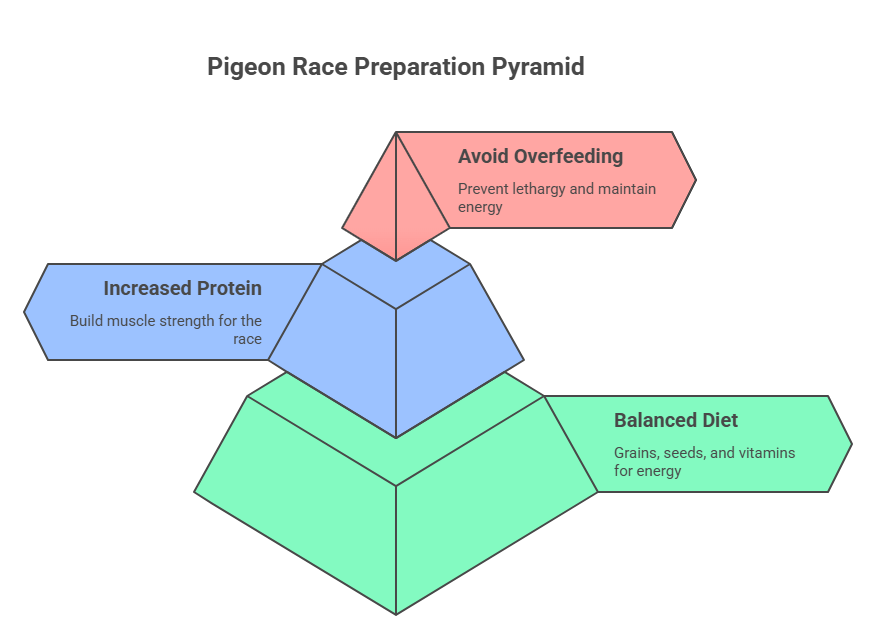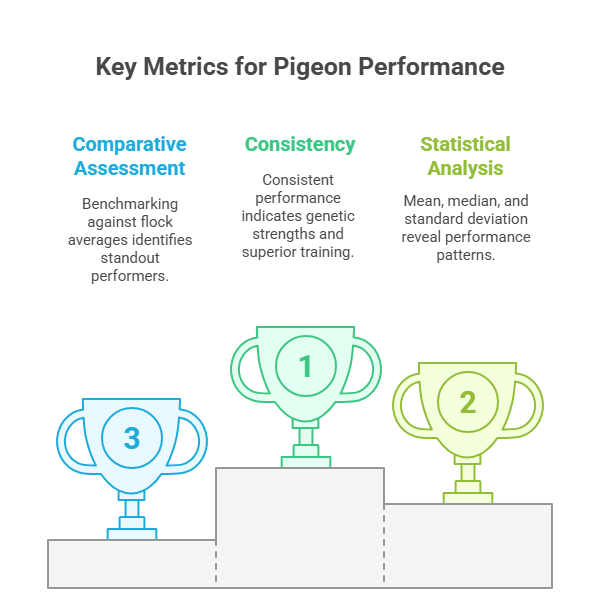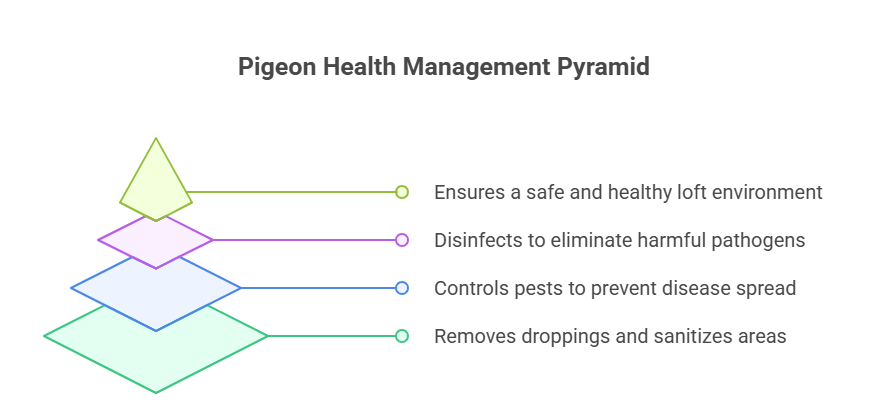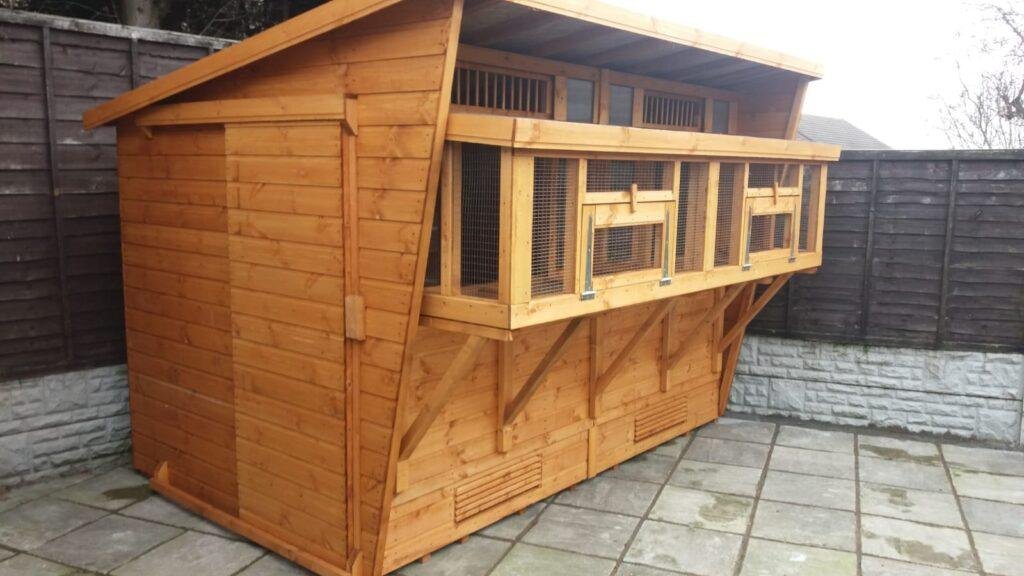The Importance of Temperature and Humidity Control in a Pigeon Loft
Maintaining proper temperature and humidity levels in a pigeon loft is paramount for the health and performance of racing pigeons. These birds have specific physiological needs that, if unmet, can lead to serious health issues and diminished racing capabilities. Temperature and humidity directly impact the respiratory health of pigeons. Excessive humidity can foster the growth of mold and bacteria, leading to respiratory infections. Conversely, low humidity can cause dehydration and respiratory distress. Similarly, extreme temperatures can stress pigeons, affecting their immune system and overall well-being.
Neglecting these factors can have severe consequences. High temperatures can cause heat stress, leading to lethargy and decreased performance, while low temperatures can make pigeons more susceptible to illnesses. Humidity levels that are too high or too low can disrupt the natural moisture balance in their respiratory system, leading to breathing difficulties. Thus, a well-regulated loft environment is crucial for optimal pigeon health.
Weather conditions play a significant role in the loft environment. During summer, high ambient temperatures can raise the loft’s internal temperature, necessitating proper ventilation and cooling measures. In winter, the challenge is to keep the loft warm while ensuring adequate ventilation to prevent moisture buildup. Seasonal changes require loft managers to adapt their strategies to maintain a consistent environment. Using insulation, heating systems, and humidity controllers can help in achieving this balance.

In conclusion, understanding and regulating the temperature and humidity in a pigeon loft is vital for ensuring the health and performance of racing pigeons. A controlled environment supports their physiological needs, enhances their immune system, and prevents the onset of diseases, ultimately contributing to their success in races. Adapting to seasonal changes and implementing effective environmental controls are essential practices for any serious pigeon racer.
Ideal Temperature and Humidity Levels for Racing Pigeons
Maintaining optimal temperature and humidity levels within a racing pigeon loft is essential for ensuring the health and performance of the birds. The ideal daytime temperature range for racing pigeons is generally between 60°F to 75°F (15°C to 24°C). During the night, it is beneficial to keep the temperature slightly cooler, ideally between 50°F to 65°F (10°C to 18°C). These temperature ranges provide a comfortable environment that supports the pigeons’ metabolic processes and aids in maintaining their feather quality, which is critical for efficient flight.
Relative humidity within the loft should be kept between 50% and 70%. This range helps to prevent respiratory issues and keeps the pigeons’ plumage in optimal condition. High humidity levels, exceeding 70%, can lead to mold growth and increase the risk of fungal infections, whereas low humidity, below 50%, might cause the feathers to become brittle and prone to damage. These conditions are supported by studies such as those conducted by the National Pigeon Association, which highlight the importance of a balanced environment for the overall well-being of racing pigeons.
Experts recommend regular monitoring of the loft environment using reliable thermometers and hygrometers to ensure that these conditions are consistently maintained. The American Racing Pigeon Union also emphasizes the need for proper ventilation systems to regulate temperature and humidity effectively. Good ventilation prevents the buildup of ammonia from droppings, reducing respiratory stress and maintaining a healthy loft atmosphere.

In essence, achieving the optimal temperature and humidity levels is a critical component for fostering the health and athletic performance of racing pigeons. By adhering to these guidelines, pigeon fanciers can promote stronger, healthier birds capable of excelling in competitive events.
Tools and Techniques for Monitoring and Controlling Loft Environment
Maintaining an optimal loft environment for racing pigeons is crucial for their health and performance. Accurate monitoring and effective control of temperature and humidity are key components of this process. Several tools and techniques can help pigeon fanciers ensure their lofts provide the best conditions for their birds.
Thermometers and hygrometers are essential tools for measuring temperature and humidity. Digital thermometers offer precise readings and often come with additional features, such as alarms to alert you when temperatures fall outside the desired range. Hygrometers, which measure humidity levels, are equally important. High-quality digital hygrometers provide accurate humidity readings and can also include alarm functions.
For more advanced monitoring, automated climate control systems can be employed. These systems use sensors to continuously monitor the loft environment and adjust heating, cooling, or ventilation systems as needed. Although they represent a higher initial investment, automated systems can save time and provide a more consistent environment for your pigeons.
Effective ventilation is critical for maintaining appropriate temperature and humidity levels. Proper airflow prevents the build-up of moisture and reduces the risk of respiratory issues in pigeons. Installing adjustable vents allows you to control the amount of airflow, adapting to changing weather conditions. Insulation is another vital aspect, helping to maintain a stable environment by reducing temperature fluctuations. Insulating the loft walls and roof can improve energy efficiency and provide a more comfortable environment for your birds.
Heating and cooling solutions also play a significant role. In colder climates, electric heaters or ceramic heat lamps can provide the necessary warmth. In hotter regions, fans or evaporative coolers can help lower temperatures. When implementing these solutions, it is important to ensure they are safe and do not pose any risks to the pigeons.
Cost-effective solutions are available for pigeon fanciers on a budget. Simple, manually adjusted ventilation systems and basic digital thermometers and hygrometers can still provide effective monitoring and control. Additionally, using natural insulation materials, such as straw or sawdust, can help maintain a stable environment without significant expense.
By employing the right tools and techniques, pigeon fanciers can create an optimal loft environment, ensuring their racing pigeons remain healthy and perform at their best.
Troubleshooting Common Loft Environment Issues
Maintaining the optimal temperature and humidity in a pigeon loft is crucial for the health and performance of racing pigeons. However, achieving this balance can be challenging due to various environmental factors. One common issue is excessive humidity, which can lead to dampness and mold growth. To address this, ensure proper ventilation in the loft. Installing exhaust fans and using dehumidifiers can help maintain a stable humidity level, reducing the risk of mold and respiratory issues in pigeons.

Extreme temperatures, whether hot or cold, can also cause significant stress to racing pigeons. During heatwaves, it is essential to keep the loft cool. This can be achieved by installing shade cloths, using fans, and ensuring a constant supply of fresh water. Additionally, consider providing electrolyte supplements to help pigeons cope with the heat. Conversely, during cold spells, insulating the loft and using safe heating sources can prevent temperatures from dropping too low. Ensuring the pigeons have ample bedding can also help keep them warm.
Adapting the loft environment during extreme weather conditions is vital. For instance, John, an experienced pigeon fancier from Ohio, shared his approach to managing his loft during a particularly harsh winter. He insulated his loft with foam panels and used a combination of ceramic heaters and heat lamps to maintain a consistent temperature. Additionally, he added extra straw bedding, which provided both warmth and comfort to his pigeons. These measures significantly reduced stress levels and led to better performance during the racing season.
Similarly, during a severe heatwave in Australia, Maria, another seasoned pigeon fancier, utilized misting systems and shaded the loft with reflective materials. She also increased the frequency of water supply to ensure her pigeons stayed hydrated. Her proactive measures not only safeguarded the health of her pigeons but also resulted in a successful racing season despite the challenging conditions.
By understanding and addressing these common loft environment issues, pigeon fanciers can create a stable and healthy habitat for their birds, ensuring optimal performance and well-being throughout the year.

